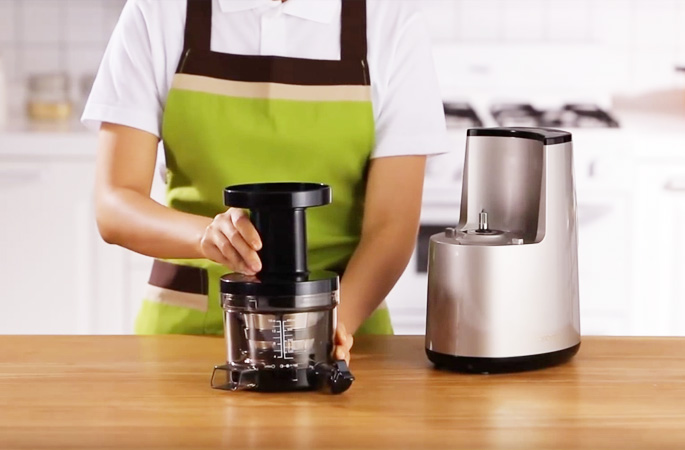You may be wondering how to clean a juicer. To start, you should disassemble the juicer. Then, you should clean its plastic components. Once the juicer is disassembled, you can wash the base and filter. If necessary, you can use fine-grade sand to clean the holes in the mesh screen. Then, you can clean the juicer by following the instructions below. But before you start cleaning your juicer, make sure to follow the instructions on your specific model.
Contents
Disassembling a juicer
Before you begin cleaning your juicer, you should turn it off. You should move it away from other appliances if necessary. Then, disassemble the juicer by dismantling its various parts. If the juicer has removable parts, you can remove these and rinse them off with warm water. Dispose of the pulp and juice separately. Do not forget to remove any strings or other items that may get caught in the juicer.
You should unplug the juicer if you are using an electric juicer. Disassemble each component separately. Make sure to rinse and dry thoroughly. If you cannot remove the pulp, use a potent cleaning solution, such as dish liquid. Make sure to thoroughly rinse each component before reassembling the juicer. If necessary, you can purchase an instruction manual that will teach you how to disassemble the juicer properly.
Cleaning plastic components
Clean the juicer’s plastic components by following a few simple steps. First, disconnect the juicer’s power cord. After that, remove any removable components and rinse thoroughly. Some juicers come with a special cleaning brush; a toothbrush or a nail brush will work well as well. Cleaning brushes are essential for cleaning juicing machines because they can get into tight spots that a finger can’t. After cleaning the juicer, focus on the non-detachable parts. Rinsing them too much could damage the juicer’s power cord and motor.
To clean the plastic parts, rinse them thoroughly with a mixture of water and 10% lemon juice. White vinegar and water mixtures may also work well. Soaking is best done overnight, but a thorough rinse may be necessary afterward. To prevent the juicer from fogging or becoming less efficient, rinse it afterward. If you can’t reach the insides of the juicer, you can use fine-grade sand.
Cleaning the filter
If you’re having trouble getting your juicer to juice properly, the first step is to clean the filter. Juicer filters are made of tiny pores, which means they can quickly clog with food particles. To clean your juicer’s filter, fill a large container with hot soapy water. Soak the filter basket in the water for at least 30 minutes. Then use a soft brush to scrub it. Rinse it under running water.
You can clean the filter of your juicer in a few ways. The easiest way to clean it is to remove the pulp with a spatula. If you don’t want to use a spatula, you can clean the container using mild dish soap and warm water. You can even use a cleaning solution made from white vinegar and water. Just make sure to rinse thoroughly after cleaning to avoid clogging.
Cleaning the base
After you’ve used your juicer for a few months, you might be wondering how to clean the base of the machine. You can try soaking the machine in water with a few drops of vinegar. This will get rid of leftover residue, but it won’t be as soaking as a cloth. Make sure to wipe the base clean and dry it thoroughly with a kitchen towel afterward. You can also use a brush to clean the screen.
To clean the base, first, remove the receptacle and filter. This will prevent the juice from spilling out from the base of the juicer. It is important to keep the spout upright while cleaning, so as not to disrupt the entire structure of the machine. To clean the base, you should use a soft, non-abrasive cloth. Never use harsh abrasive sponges or soak the base in water. To prevent mold and mildew, always rinse juicer parts thoroughly before putting them back together.
Using vinegar to clean a juicer
When it comes to cleaning your juicer, distilled white vinegar is essential. Dishwashing liquid may not be strong enough to wash the interior parts of the juicer, so you’ll need to use this cleaning solution. Disconnect the juicer’s cord from the socket and remove the battery. Then, use a brush to scrub the juicer parts. Then, rinse the parts with water, allowing them to air dry. The process is quick and easy.
If you’re using an old juicer, you can clean it by soaking it in a mixture of white vinegar and milk. This will break down any dried juice residue in the parts. You can also use a liquid dish detergent, like Cascade, to clean any stains in the juicer parts. While regular dish liquid may not work, this solution will clean all parts thoroughly. After cleaning, you can use it again to juice.
Air-drying a juicer
If your juicer isn’t cleaning itself, you should clean the pulp container with vinegar. To do this, make a solution of 3 1/2 tablespoons of vinegar and warm water. Soak the pulp container for about 15 minutes and then scrub it with a soft brush or sponge. Once the pulp container is clean, place it back into the juicer base and air-dry. You can use the same procedure for cleaning the juicer’s base.
To clean the juicer parts properly, use warm soapy water to clean the parts thoroughly. Avoid using abrasive cleaners, as they can scratch the parts. Once the juicer is clean, you can assemble the pieces to begin juicing again. Take note that strong-colored fruits and vegetables can cause the parts to become discolored, so it is vital to dry them before you reassemble the juicer.

